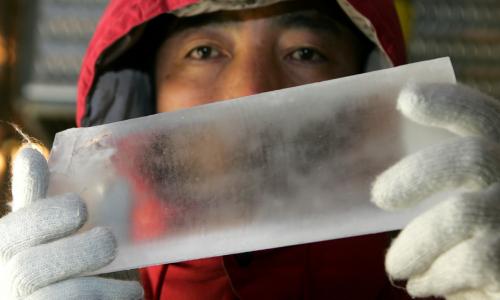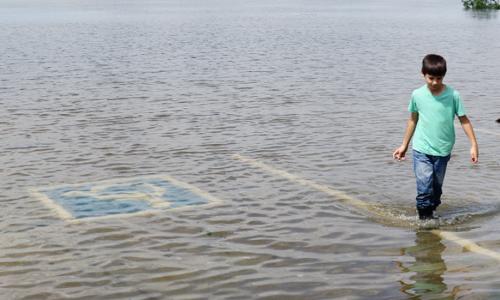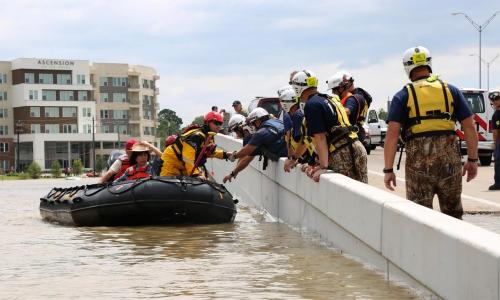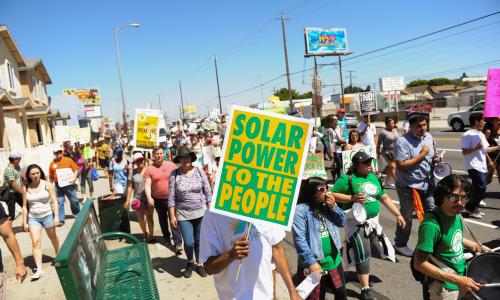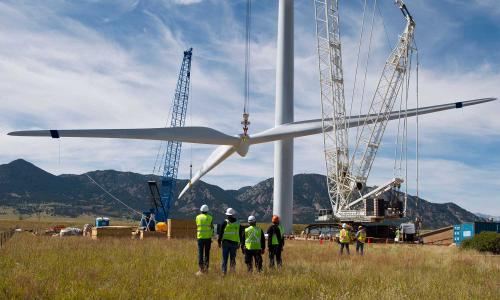Table of Contents
The science is clear: climate change is happening. We are the cause. We need to act now.
Scientists have studied global warming for more than 100 years. Thousands of experts have tested hypotheses, gathered evidence, constructed models, debated results, and reviewed one another’s work. Thousands of papers are written every year, produced from nearly every leading university and research institution on Earth—from Harvard to NASA and the US Department of Defense.
The consensus couldn’t be clearer. Climate change is happening. It’s caused primarily by the burning of oil, gas, and coal. If we do nothing, the world will become significantly less habitable.
We’ve lost precious time, but if we act now—decisively and dramatically—we still have a chance at avoiding climate change’s most catastrophic impacts.
The basics
When released into the atmosphere, certain gases act like a blanket, preventing heat from escaping. One of the most important heat-trapping gases is carbon dioxide (CO2), which is released when we burn fossil fuels like oil, coal, and gas.
The world currently emits a huge amount of carbon dioxide into the atmosphere every day. Carbon dioxide can trap heat for decades: roughly 20 percent will linger in the atmosphere for around 800 years. Methane, another gas, traps heat in the atmosphere for nearly a dozen years at a more powerful level, before transforming into carbon dioxide to trap heat for decades or even centuries.
The cumulative effect is to raise the planet’s temperature. Heat from the sun that would otherwise escape remains on Earth, warming the oceans, land, and air.
As temperatures increase, the planet changes. The seas rise. Droughts and wildfires grow worse. Extreme weather becomes more common. Eventually, entire regions become uninhabitable.
The more carbon dioxide we produce, the worse these and other impacts become—and the more difficult it is to change direction.
The evidence
Scientists have taken detailed measurements of carbon dioxide (CO2) levels since the late 1950s. They’ve also gathered in-depth records of past CO2 levels from sources like ice core studies.
The results? Carbon dioxide levels are higher today than any point in at least 800,000 years. The cars we drive, the fuel we burn for electricity and warmth, the food we eat or waste, and the forests we clear are the cause.
Temperature trends from around the world reinforce these findings. Every one of the past 40 years has been warmer than the 20th century average. The 12 warmest years on record have all occurred since 1998. The five warmest were 2014 to 2018. We’ve already warmed the planet by 1 degree C (1.7ºF).
Climate models successfully forecast these temperature increases, as well as other impacts like sea level rise and ocean acidification. The models now suggest that we need immediate, dramatic reductions in our CO2 to avoid catastrophic impacts—and that time is running out.
The impacts
The consequences of climate change are already here. In the United States, chronic flooding threatens coastal communities from Texas to Maine. Mega-storms like Harvey, Maria, and Katrina are increasingly commonplace. Wildfires, heat waves, droughts, and inland flooding continue breaking records.
Without immediate emissions reductions, these impacts will worsen. Globally, food and water shortages could displace hundreds of millions of people, increasing conflict and war. Entire regions of the world may become uninhabitable. Much of what we take for granted today—from productive agricultural land and reliable growing seasons, to coastlines and coral reefs—will change dramatically. Much will be lost.
Solutions
The world’s leading voice on climate science, the International Panel on Climate Change (IPCC), explains that the worst impacts of climate change could be avoided if we successfully limit global warming to under 1.5ºC to 2ºC.
Doing so will not be easy. Under current emission levels, we’ll likely exceed 3ºC this century. For a fighting chance at 1.5ºC, we need to reach “net zero” global emissions by 2050.
“Net zero” means that all the sources of heat-trapping emissions (such as burning fossil fuels) must come in balance with all the processes that remove heat-trapping gases from the atmosphere (such as the growth of forests). Achieving net zero emissions will require massive changes in the energy, transportation, and food sectors, as well as afforestation and new “negative emissions” technologies (such as direct air capture machines that pull CO2 out of the air).
Fortunately, we have clean energy and clean vehicle technologies today. We have scientific consensus. We know what needs doing. We only need to act.
